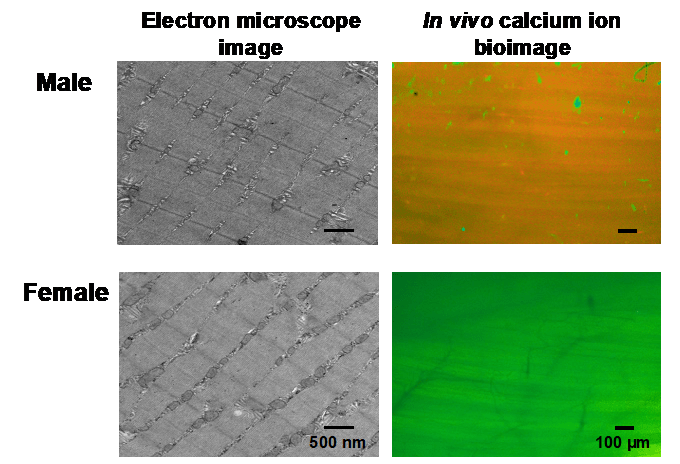March 2020 Issue
Research Highlights
In vivo bioimaging: technology to elucidate sex-dependent differences in skeletal muscle function
It is widely accepted that there is a sex-dependent difference in physical performance. Specifically, it has been shown that females show superior fatigue resistance compared to males.
However, the relationship between sex differences in skeletal muscle function and mitochondrial ability—known as fatigue resistance—is still not clear.
Now, Yutaka Kano and colleagues at University Electro-communications and Kansas State University focused on calcium ion (Ca2+) dynamics that regulate muscle contraction and mitochondrial function.

Using in vivo bioimaging system for experimental animal models, they measured changes in cytoplasmic Ca2+ concentration after Ca2+ uptake inhibition of sarcoplasmic reticulum (SR) in male and female mice.
The results suggest that (a) mitochondrial Ca2+ uptake ability is greater in female than male myocytes; and (b) this superior Ca2+ uptake ability of female myocytes is due, partly, to the higher intermyofibrillar mitochondrial content.
If this observation is true for human muscles, as well as helping to explain sex-specific exercise adaptations this observation may also open the way for the development of new therapeutic strategies for patient populations characterized by muscle dysfunction and exercise intolerance.



